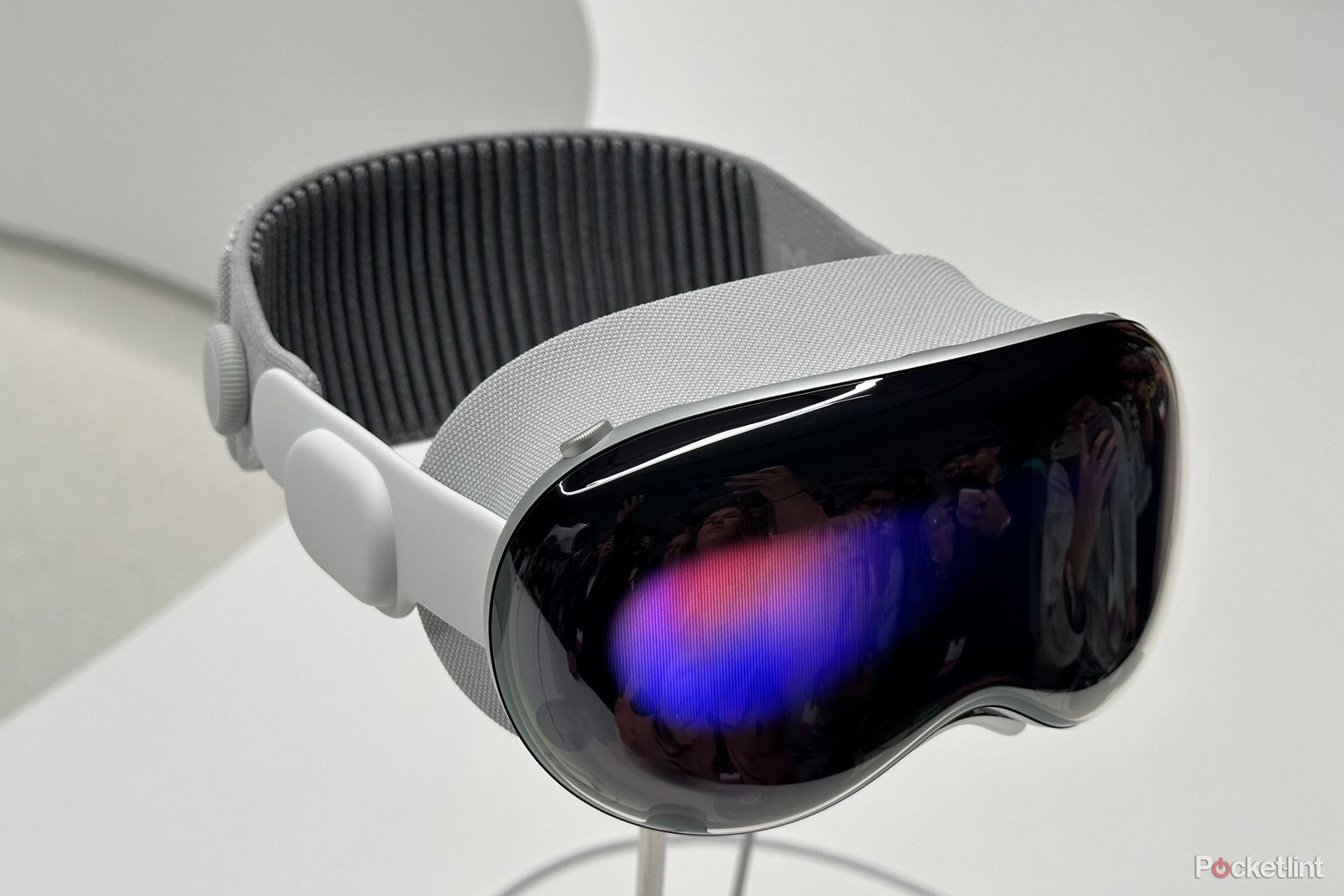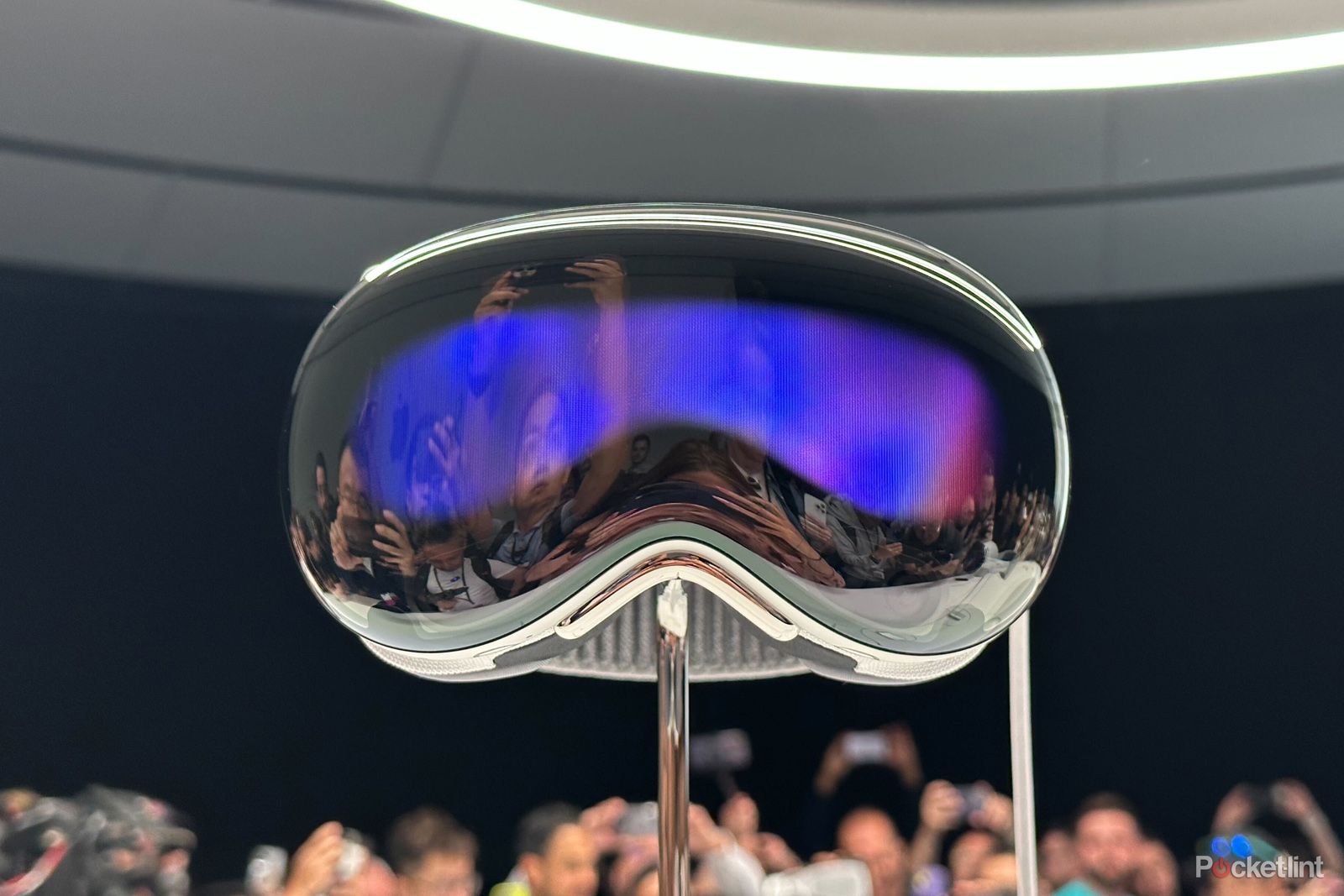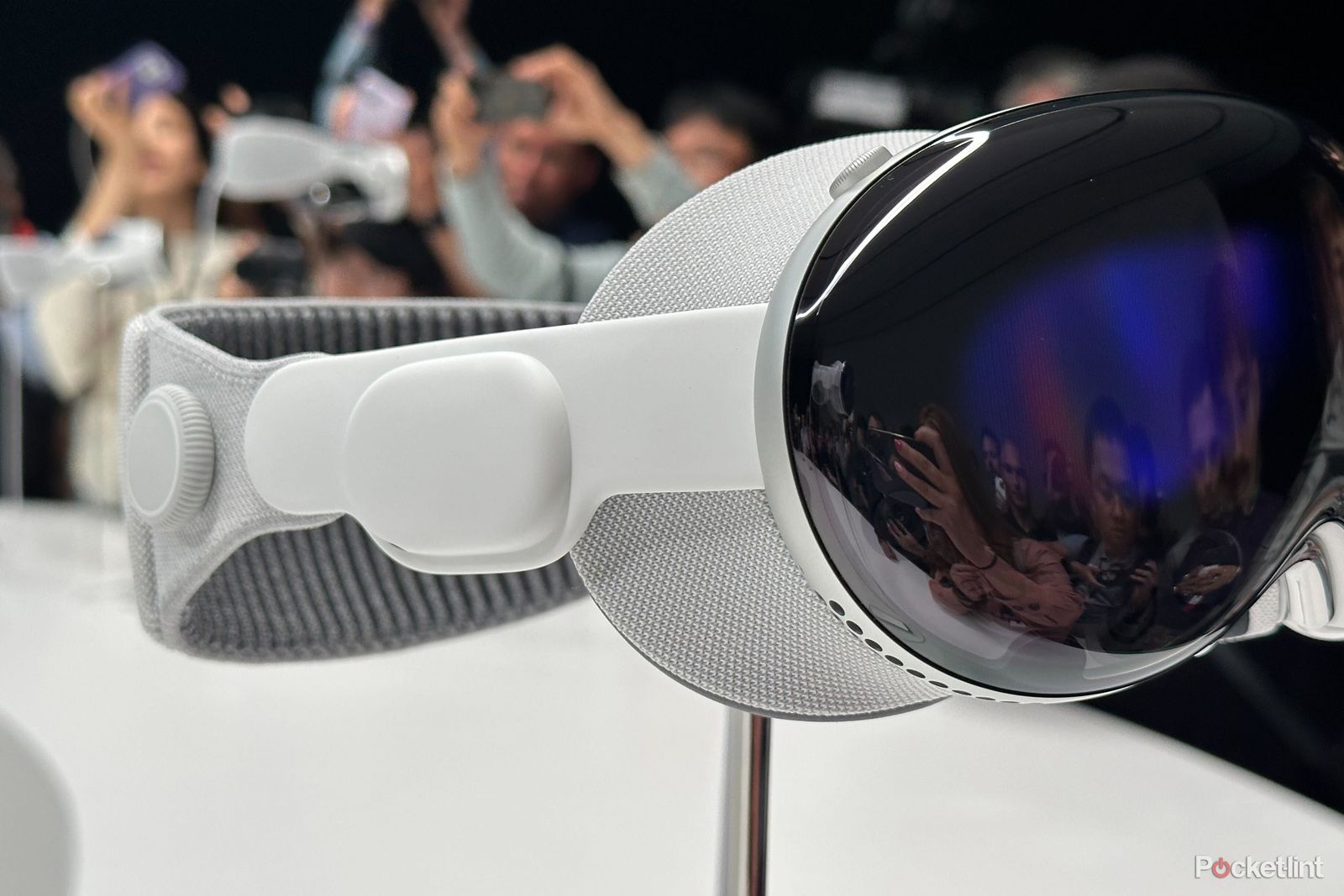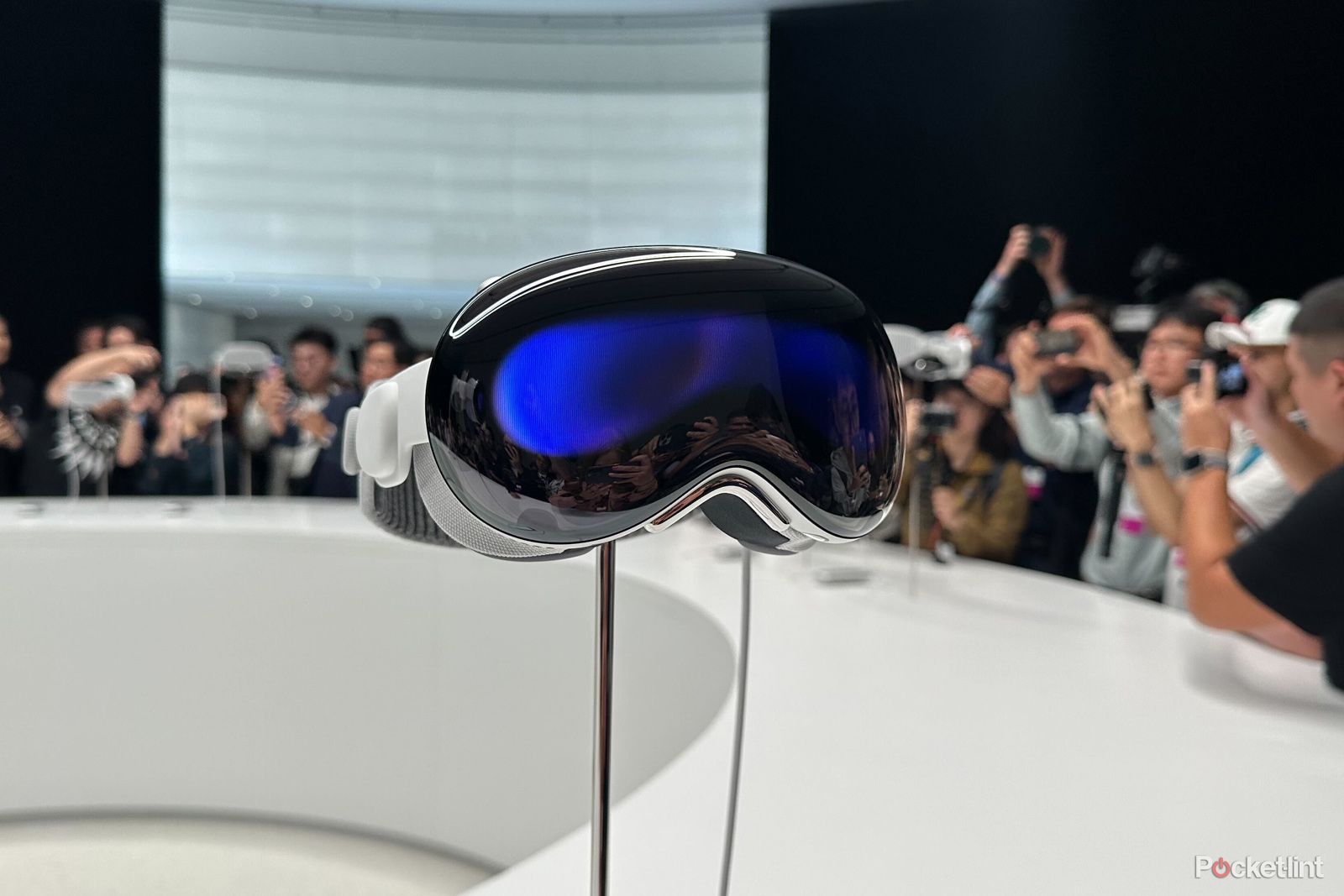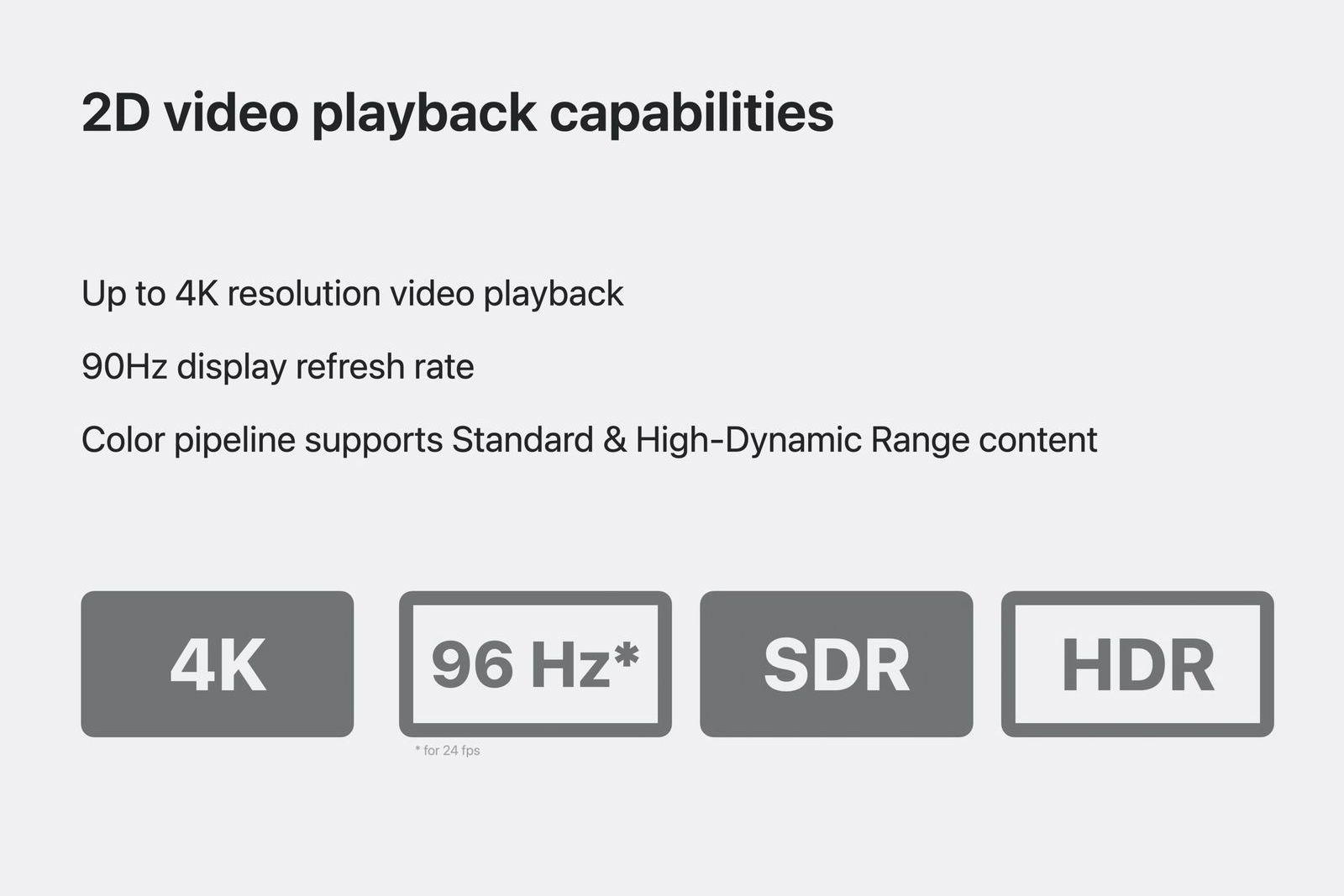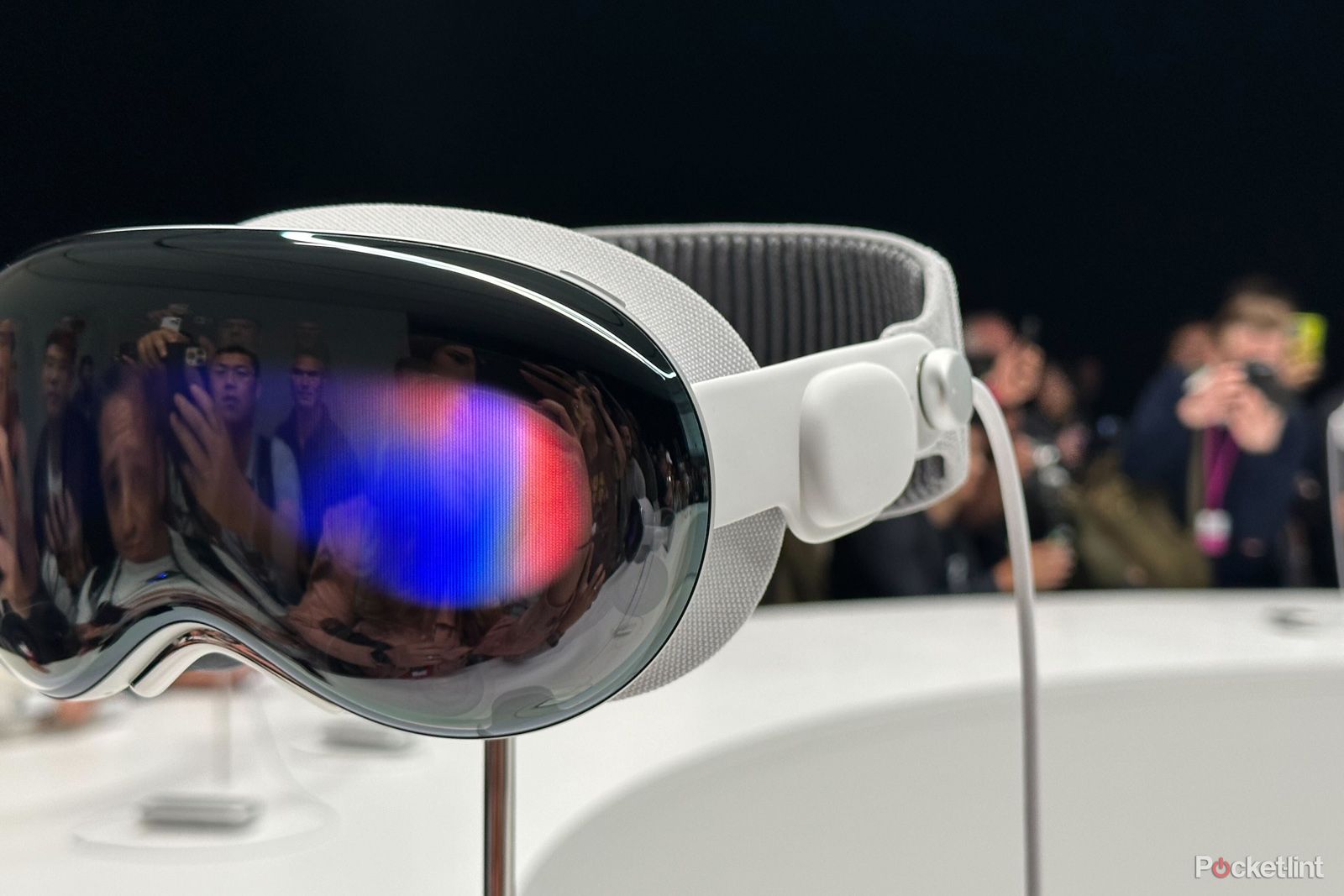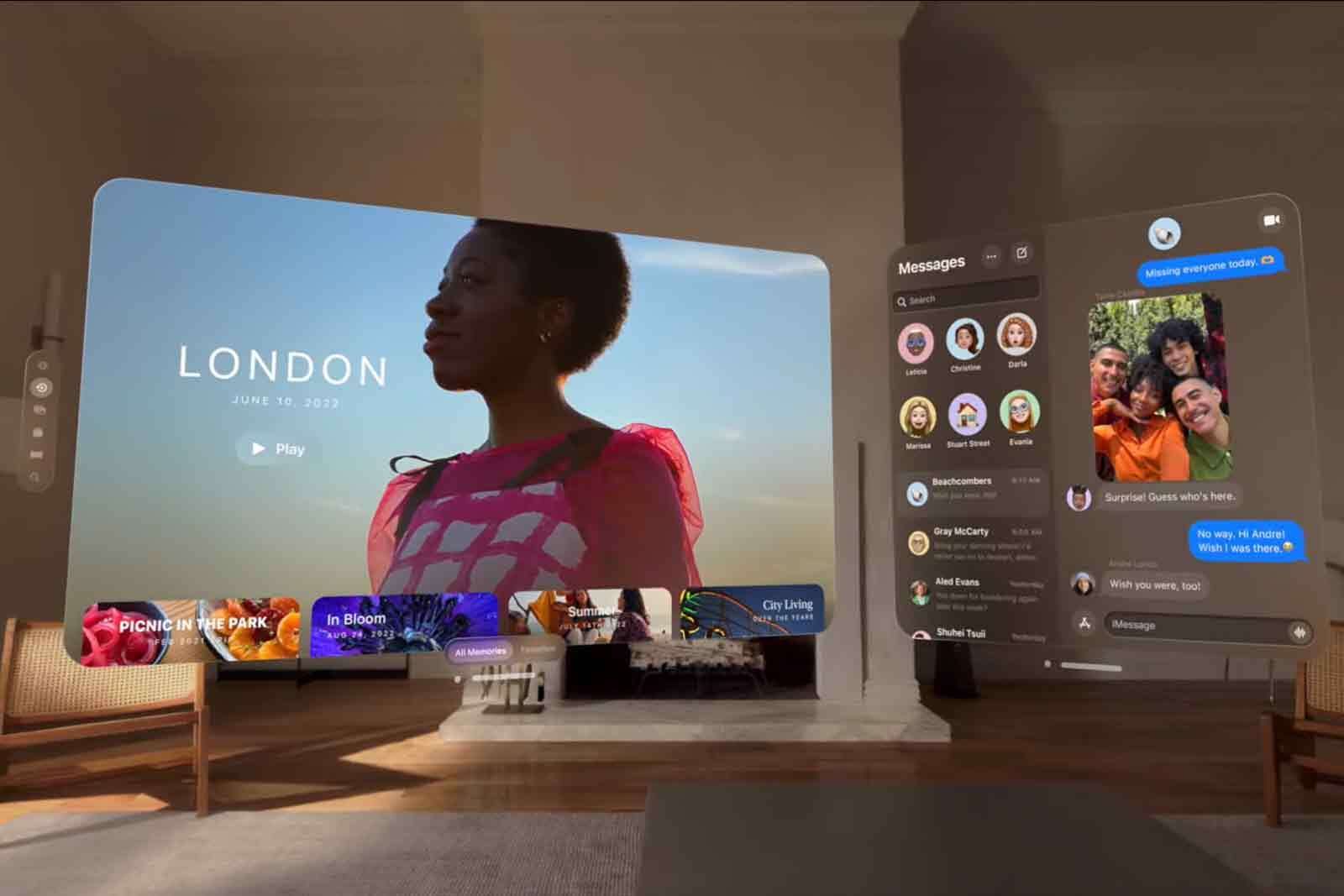The rumour mill first started churning with news that Apple was paying closer attention to augmented reality in 2015. Through many years of speculation, it was at WWDC 2023, that Apple finally announced its long-awaited headset. Called Apple Vision Pro, the company says this is a new chapter, the first spatial computing device.Here's everything you need to know.
What is Apple Vision Pro?
Apple Vision Pro is essentially a face-worn computer that's going to be able to deliver mixed reality experiences. That's a combination of virtual and augmented realities, but delivered in a familiar Apple way, integrated with the rest of the Apple ecosystem and with support for common apps and services, like FaceTime and Disney+. It's designed to offer an immersive experience, but at the same time not cut you off from the real world, allowing smart interaction and wider awareness of the real world than some competitor devices.
Apple Vision Pro launch date
Apple Vision Pro was revealed at WWDC 2023 on 5 June, but the actual on-sale date has not been confirmed, except to say that it will be available in early 2024. It will be initially available in the US, with other regions to follow.
Apple Vision Pro price
Take a deep breath, because the Apple Vision Pro price has been confirmed at $3,499. As it's only going to be available in the US initially, there is no word on prices in other regions, but we'd expect it to be more expensive in other regions, given recent price differences on other Apple products. It will be available from the Apple Store where you'll also be able to experience Apple Vision Pro and learn more about it.
Apple Vision Pro design and build
There's a single sheet of laminated glass on the front of Apple Vision Pro, which meets an aircraft-grade aluminium alloy frame to give the device strength. This is cushioned by a Light Seal that uses softer materials, but there will be a range of different shapes and sizes so it can be perfectly melded to your face. The strap on the rear is ridged and designed for prolonged wear, with a dial to adjust the tightness and keep it secure.
The band attaches via a simple mechanism, so you'll be able to change it - with the suggestion that there will be various other types of band.
There is a digital crown as well as a button, the latter allowing 3D image capture through the headset, the former allowing you to dial down the amount of the outside world that's let in.
Apple Vision Pro audio
The audio on Apple Vision Pro comes from audio pods integrated into the band, meaning you can have audio without plugging in headphones. That will mean you're not totally isolated. It supports spatial audio for an immersive sound experience, with Apple detailing that it will be able to create a range of soundscapes to envelop you. It also supports Personalised Spatial Audio, based around an individual's head and hear shape. The audio pods are the blobs that you can see in the image above.
Apple Vision Pro specs
We're breaking the Vision Pro specs down into a number of areas - we're sure that more information will get revealed as Apple tells us more about the hardware.
Vision Pro displays
There are two displays in the Vision Pro, one for each eye. These are micro-OLED displays, with a combined 23 million pixels. That means that each display has a resolution higher than a 4K television, although the actual displays are no larger than a postage stamp. Then there is a precision lens before it gets to your eyes, with the option for Zeiss inserts to meet a full range of prescription corrections. These will be sold separately, however.
Apple didn't specify too many technical details during its unveiling, but it was later revealed that these displays will run at 90Hz, jumping up to 96Hz as required, to sync more naturally with 24fps movie playback. They also support HDR content and the headset can decode either MP4 or HEVC codecs. This news, as reported by The Verge, comes from a WWDC developer session, in which Apple shares how 2D video and stereoscopic 3D video work with the Vision Pro.
Vision Pro compute power
If you were expecting a watered-down device, then think again. The Apple Vision Pro is powered by an Apple Silicon M2 chip, sitting alongside a new R1 chip. This partnership means there's a lot of computational power, with the R1 designed to remove any form of lag, so it feels like a seamless experience, no matter what you're doing. There's a cooling system drawing air through the bottom of the headset to keep that hardware cool.
Vision Pro cameras and sensors
The Apple Vision Pro is loaded with sensors and cameras. There are 12 cameras, 5 sensors, and 6 microphones on the headset. There are lidar cameras for capturing 3D information, as well as motion sensors for head movement, eye tracking as well as hand tracking so Vision Pro can accept gestures for navigation.
Vision Pro battery life
The Apple Vision Pro can be connected to the power for day-long use, or it can use a battery pack, which will provide about 2 hours of use.
How does Apple Vision Pro work?
Apple Vision Pro uses a range of cameras and sensors to take information from the real world and fuse it with the virtual world, creating a mixed reality. You'll be looking at a display when you put the headset on, but that display will firstly show you the world around you - the real world. You'll then get information overlaid on that view to augment reality, which you can navigate with your eyes. This will let you look at an app for example, and tap your finger to select it. Thanks to cameras on the exterior, gestures will be tracked too, allowing for hand controls.
The idea is to make it appear as though the virtual elements in Vision Pro are part of the real world - and that's where you'll be able to take advantage of seeing a huge display for watching movies, for example, that looks 100ft wide. You'll be able to adjust the screen to suit your preferences and things like shows add to the realism of what you're seeing.
The Vision Pro doesn't shut you off from the real world, with a cleaner passthrough system. While most VR headsets have front cameras so you can see the world around you, the Vision Pro will also let other people see you, so when someone comes to talk to you when you're wearing Vision Pro, they will see your eyes in the front of Vision Pro, and you'll see them. In both case you're looking at an image from the cameras, of course, but it removes that physical barrier that other VR headsets present.
What apps are there in Vision Pro
Powered by visionOS, Apple is pitching Vision Pro both as a work and home device, saying that you'll get access to common workplace apps like Microsoft Office - although you'll also just be able to virtualise your Mac by looking at it. Then you can access the content of your Mac, allowing you to do whatever you want. It supports the Magic Keyboard and Magic Trackpad, so you can control other inputs into your virtual workspace.
Familiar Apple apps will also be there, from Photos to Apple TV+, as well as FaceTime. You'll be able to scan yourself to create a digital persona, so that when you're on a FaceTime call, those on the other end will be able to see a digital you, talking to them. There will also be Arcade games to play, supporting third-party controllers, so you can game in a new dimension.
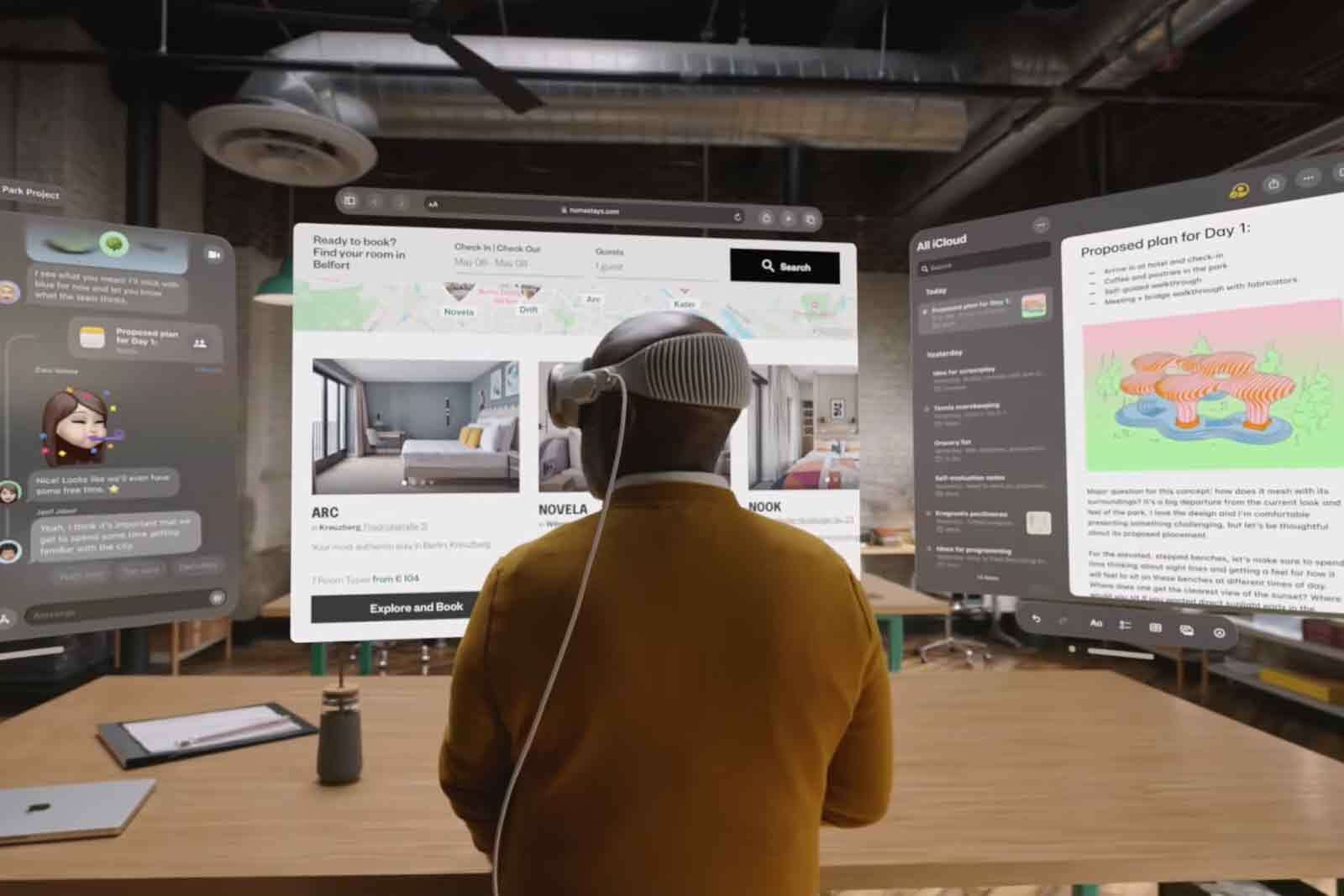 Is Apple Vision Pro a wireless VR headset?
Is Apple Vision Pro a wireless VR headset?
Yes and no. It's wireless in the sense that you don't have to connect it to a computer. The power for this headset is contained within the headset, you don't have to go and buy a supercomputer to run it like you did with something like HTC Vive. Instead it's aiming to handle the computing itself, but it will need power. That can come from the battery - which is wired but can then slip into your pocket, but you only get 2 hours of use from it. Beyond that, you'll need to connect to power if you want to use the headset for longer.
What about Apple Glasses?
As well as the Apple Vision Pro, Apple was said to be working on Apple Glasses - although these weren't launched alongside the Vision Pro. The suggestion is that these are a set of lighter-weight augmented reality glasses, but leaning on the learnings and visionOS of Vision Pro. The aim here is to create an everyday wearable style pair of glasses similar to traditional spectacles but with built-in displays. These will be similar to Ray-Ban Stories but with augmented reality capabilities.
Analyst Ming-Chi Kuo says these glasses will be tethered to your Apple iPhone and that phone will do most of the processing. According to the most recent rumours Apple has postponed the development of the Apple Glasses due to technical issues and instead focused on the Vision Pro headset. If Apple Glasses do appear it's likely it will be sometime in 2026.
According to reports Apple Glasses are intended to do several things related to augmented reality experiences but will also be able to "...synchronize with a wearer’s iPhone to display things such as texts, emails, maps, and games over the user’s field of vision."
So you'll be able to get a heads-up display of Apple Maps navigation while walking for example. There are also some suggestions that Apple Glasses will help with privacy by displaying info directly in front of your eyes so you don't need to get your phone out of your pocket. Unlike other smart glasses, these won't include cameras for the sake of privacy but instead will focus on the user experience.
What AR/VR companies has Apple bought?
We can see how serious Apple is about its AR/VR efforts based on the companies it has purchased over the last few years. Not only has Apple hired AR/VR experts, but it's also acquired companies that specialise in this area. In 2017, it purchased Vrvana, a company that developed a mixed-reality headset called Totem. Around that time, it also bought Akonia Holographics, a company that makes lenses for AR smart glasses. Apple also purchased Israeli-based 3D body sensing firm PrimeSense way back in 2013.
And in 2020, Apple bought NextVR, a company which gave sports and concerts a VR platform. The company had partnered with Fox Sports, Wimbledon and the NBA among others.
Other companies it's purchased include Metaio, Faceshift, Emotient, Flyby Media, and RealFace.
Apple Glasses and Vision Pro rumours: What's happened before launch?
This is all the rumours about the Vision Pro headset - called Reality Pro - before launch, including some suggestions about the elusive Apple Glasses.
2 June 2023: More details around Apple Reality Pro revealed
Mark Gurman of Bloomberg offered up some more information about the Reality Pro headset ahead of its expected announcement.
31 May 2023: This leaked Apple Reality Pro AR/VR brightness spec puts the competition in the shade
Ross Young tweeted a list of display specs for Apple's Reality Pro headset, suggesting it will be 4K per eye.
12 May 2023: Wall Street Journal report corroborates details
A big report in the WSJ reaffirms reports that Reality Pro will have an external battery pack, along with a ski-goggle-like design.
24 April 2023: Apple Reality Pro mixed headset could come up with yet another new charging connection
Reports indicate that Apple's headset will use a new charging solution - another magnetic charging cable.
3 April 2023: Apple AR/VR headset's expected WWDC debut thrown into doubt
Ming-Chi Kuo claims that Reality Pro could still miss WWDC if Apple gets cold feet.
27 March 2023: Apple's AR/VR headset shown off to executives as launch nears
In his newsletter, Mark Gurman reports that Apple execs have been shown Reality Pro's demonstration already
27 February 2023: Apple's AR/VR headset could have you typing in thin air
Mark Gurman indicates that Apple is working on an air-typing interface for Reality Pro.
15 February 2023: Apple's Reality Pro headset might finally make an appearance at WWDC
The headset's reveal might well have been pushed back.
24 January 2023: Apple's Reality Pro headset sounds intense, and it's coming this spring
Apple's headset will reportedly have a $3,000 price tag attached.
5 September 2022: Apple's AR/VR headset to be called Reality Pro or Reality One, it's claimed
The name Reality Pro becomes widely reported as a potential title for the new headset Apple's working on.
9 June 2022: iOS 16 integrates U1 chip with ARKit amid rumours of Apple’s mixed reality headset
9to5Mac reports that Apple will build the U1 chip into its headset for a bunch of potential features.
May 2022: Bloomberg reported that Apple's board of directors were shown the Reality Pro headset
It was said to be capable of both AR and VR, and the company is now working on an operating system called realityOS.
13 April 2022: Apple's AR headset might not arrive until 2023
It's reported that the 2022 release date Apple was aiming for internally has slipped into 2023.
3 March 2022: Is this what the Apple AR headset will look like?
LetsGoDigital produces mock-ups of the headsets based on reports.
18 March 2021: Kuo: Apple's Mixed Reality Headset to Feature Eye Tracking System, Iris Recognition a Possibility
Analyst Kuo reiterates that he too has heard that eye-tracking is on the menu for the headset.
4 February 2021: New Apple Mixed-Reality Headset Details: Swappable Headbands, Eye-Tracking
The Information reports that Apple's headset will feature eye-tracking.
21 January 2021: Apple will introduce a niche VR headset before going mainstream with AR glasses
Apple is reported to be interested in first going for a niche market before it widens out its focus once acceptance grows.
5 January 2021: Apple Reportedly Moving Into 'Second Phase' of AR Glasses Development
MacRumors spreads the news that Apple is apparently moving forward into a further stage of its development, a progress marker.
14 May 2020: NextVR acquired by Apple
Apple makes another major VR acquisition, buying NextVR.
September 2019: ‘Apple Glasses’ explained and how iPhone-connected item trackers will work
9to5Mac has an expose reporting that the first headset from Apple will rely on an iPhone for much of its power.
April 2018: Apple's working on a powerful, wireless headset for both AR, VR
CNet publishes a report dishing details of Apple's early development progress on its headsets.
October 2017: Apple's Tim Cook on iPhones, augmented reality, and how he plans to change your world
Tim Cook says that AR is a way off being viable for the public due to a range of challenges on the manufacturing side.
September 2016: Exclusive: Why Apple CEO Tim Cook Prefers Augmented Reality Over Virtual Reality
Tim Cook talks up the potential of AR in an interview, one of the first times Apple has spoken about the tech.
May 2015: Apple acquires augmented reality company Metaio
TechCrunch reports that Apple has made another acquisition that has ramifications in AR and VR.

